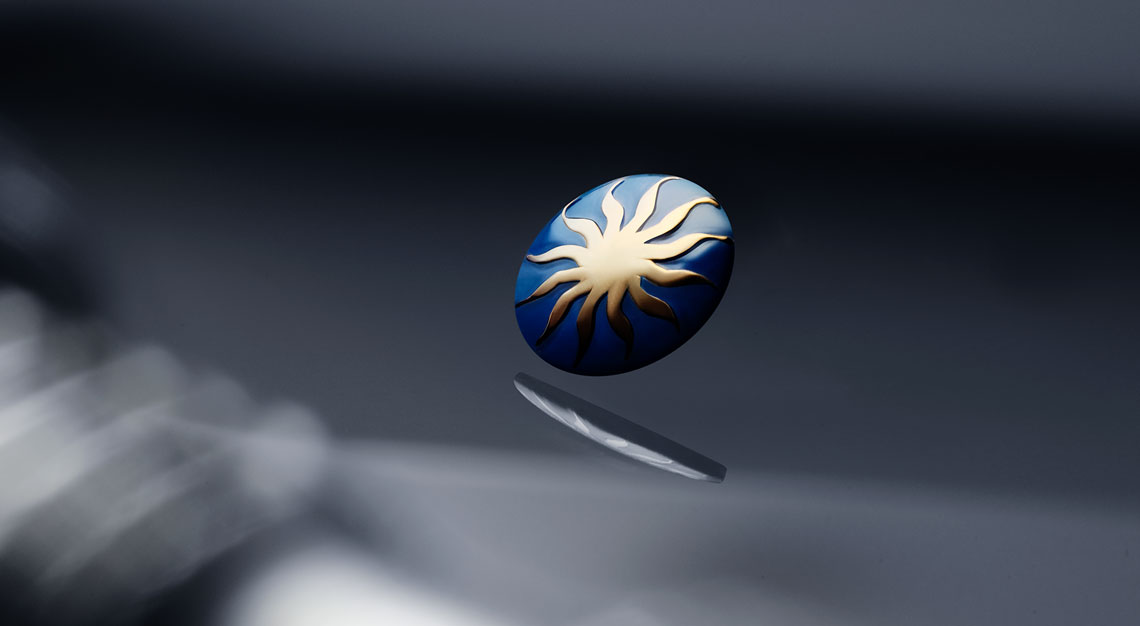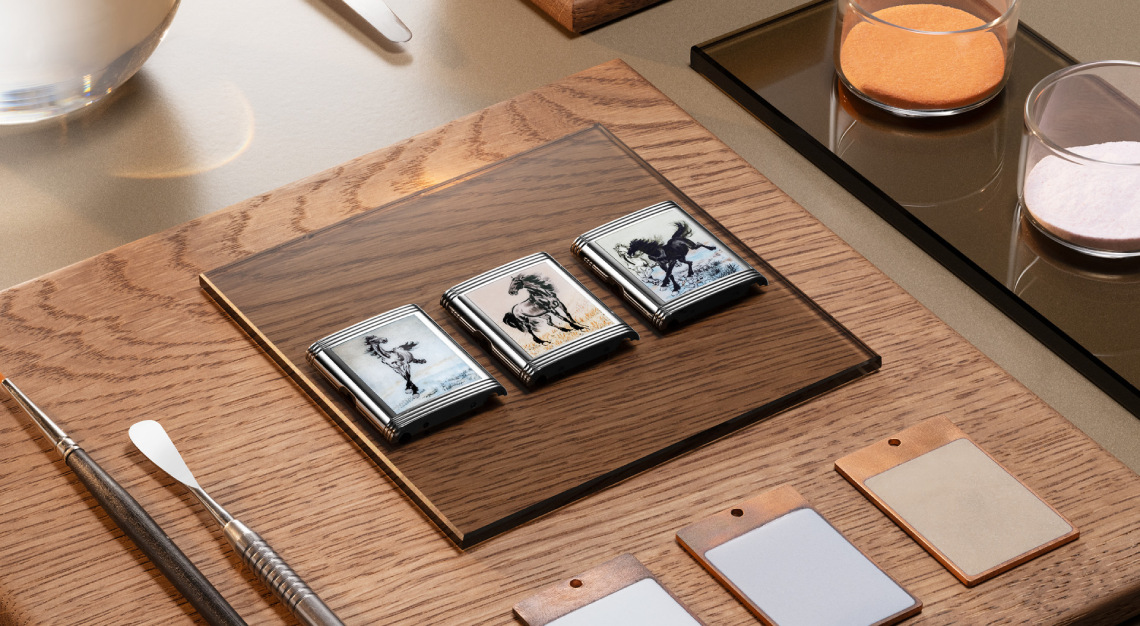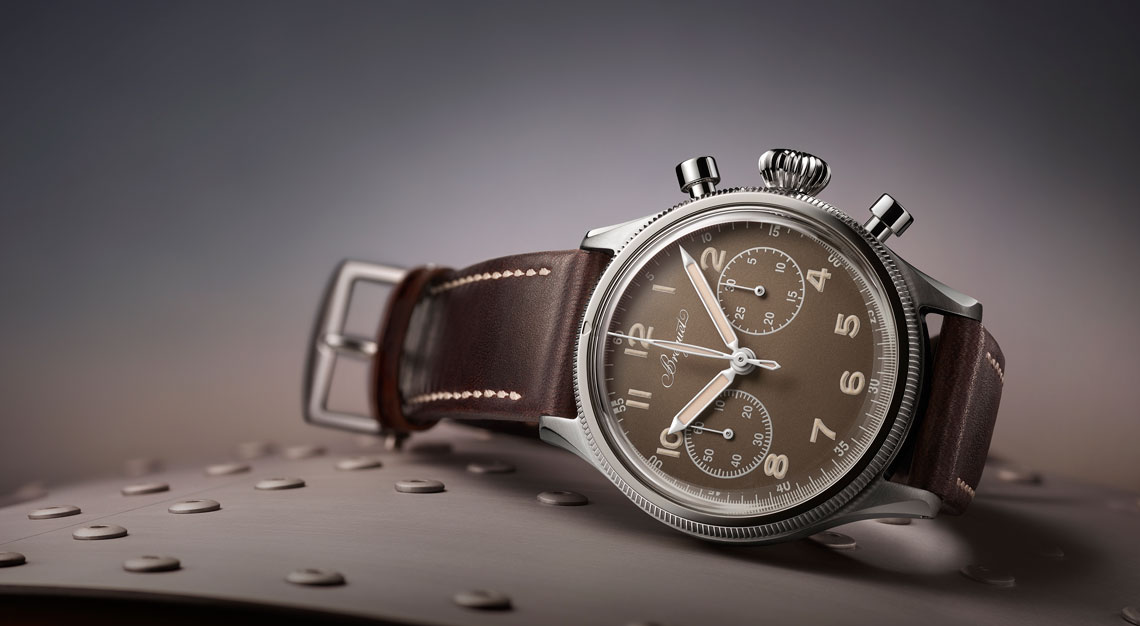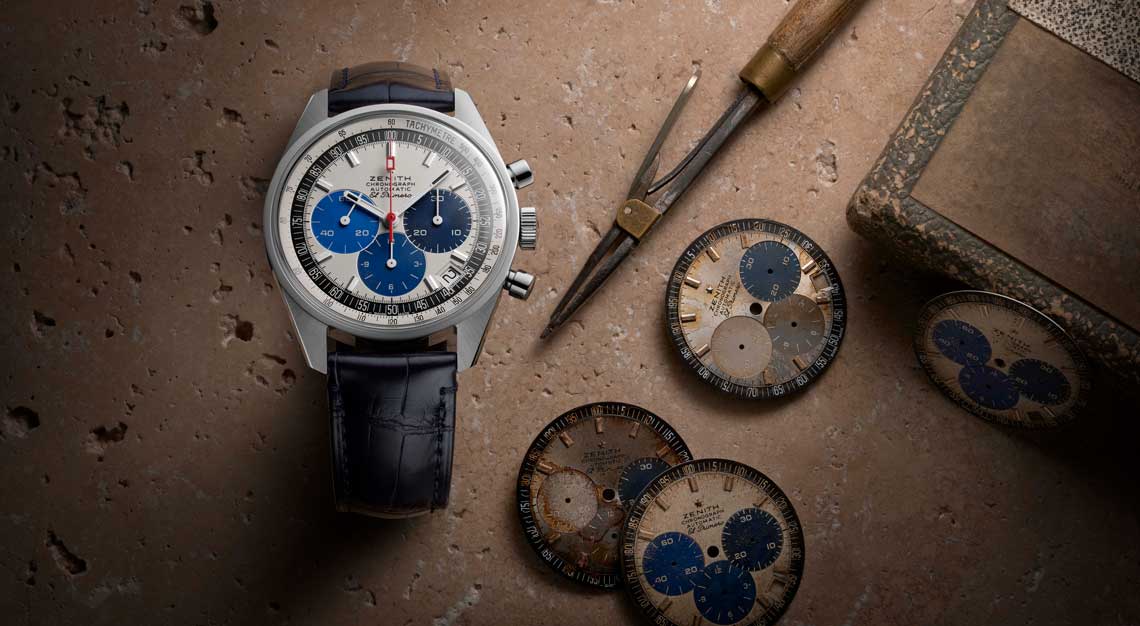The Grande Maison’s latest magnum opus reveals a breath-taking four-part story of its inventive spirit and watchmaking savoir-faire.
The phrase ‘turning back the clock’ has a profoundly different meaning with the Jaeger-LeCoultre Reverso Hybris Mechanica Calibre 185. Unveiled to an exclusive audience on March 4th – the exact day 90 years ago when the Reverso received its certification from the Swiss patent office – this astonishing grand complication cleanly trumps all others ever made in the history of watchmaking as it has not one or two, but four separate functioning dials earning it a most extraordinary sobriquet, the Quadriptyque.

Indisputably one of the most important icons of modern haute horlogerie, the Jaeger-LeCoultre Reverso needs no introduction, and is globally renowned for its unique case design which swivels back and forth to reveal the back of the case, a secondary dial, or in the case of the category-defying Quadriptyque, much more. Celebrating the Reverso’s 90th anniversary, this four-part masterpiece is the ultimate hat-tip to Jaeger-LeCoultre’s incredible watchmaking savoir-faire that everyone has been waiting for.
Four faces, 11 complications, 12 patents (three of which are completely new), and 800 components squirreled into one svelte package that’s even more wearable than its predecessor, the three-dialed Reverso Triptyque of 2006. More remarkably, the Quadriptyque took Jaeger-LeCoultre just six years to perfect – lesser watches have taken more time to produce.

Says CEO of Jaeger-LeCoultre, Catherine Rénier, “We see it as a very important piece, a tribute not only to the Reverso and its iconic design, but also to the manufacture. This piece is done totally in-house, from design of the calibre, to ideas on construction, to manufacturing, all the way to finishes and métiers rares.”
To be precise
As the most complicated Reverso Jaeger-LeCoultre has ever made, Rénier has taken the manufacture to enviable new heights. The Quadriptyque is also the world’s first – and most probably only – watch with four dials, and it reveals the essence of the maison over four distinct parts.
The first dial tells us how far Jaeger-LeCoultre has come in terms of precision haute horlogerie, as it starts its measurement of time the smallest fraction of a second to minutes, hours, days, months, years, and beyond. With a flying tourbillon making one rotation every minute and oscillating at a speedy 28,800vph thanks to a high precision ellipse isometer escapement, every beat of the balance records 1/8th of a second, while the perpetual calendar instantaneously changes all its displays precisely at the stroke of midnight.

Rénier also made special mention of the grande date mechanism, which is unusually positioned next to the flying tourbillon and required the invention of a completely new system of discs that respects the movement’s compact dimensions. One of three patented mechanisms in this watch, this is also a testament to Jaeger-LeCoultre’s expertise with ultra-thin watchmaking – a claim that was staked first in 2014 with the Hybris Mechanica 11 Master Ultra Thin Minute Repeater Flying Tourbillon.

Indeed, much of Jaeger-LeCoultre’s most venerated inventions and innovations have found their way into the Quadriptyque. While the watch had taken six years to make, Rénier adds that “188 years of knowledge went into the Quadriptyque. Precision, sound making, celestial and astronomical complications. It is symbolic of all the skills and the continuation of our calibres. We have today a total of 1,200 calibres from 101, the smallest mechanical movement created in 1929, all the way to 185, a new calibre for Quadriptyque.”
Music of time
So all its training has prepared Jaeger-LeCoultre for this timepiece. If the Reverso is the ultimate Jaeger-LeCoultre, then the Quadriptyque would have to be the ultimate Reverso. After a beautiful dalliance with horological precision, we open the watch as if it were a book to unveil the second dial which is an invitation to the world of sound-making. Here, a digital time display does away with hour and minute hands, allowing the watch to be thinner still, and offering a different vision of time.

But there’s more. Look around the periphery and you’ll see Jaeger-LeCoultre’s signature square-shaped crystal gongs that begin and end at six o’clock where two hammers (trebuchet, of course) sit, waiting for the moment when they are activated to chime the time. The manufacture’s extraordinary virtuosity with repeaters and chiming watches truly takes flight here, as trebuchet hammers are known to deliver clean and swift strikes, while crystal gongs, so named because they are directly attached to the watch’s crystal, emit chimes that are loud and clear, with a beautiful long finish.
Says Rénier, “The Quadriptyque was definitely an idea that came very quickly [after the Triptyque] not just in terms of number of faces but we wanted a minute repeater to be added in terms of complications. It’s a permanent work in progress. We have a very big R&D and innovation team that’s always full of ideas, trials, prototyping, patents… At some point, all of it is brought together on one project, and that was the Quadriptyque.”

Needless to say, this repeater mechanism is also equipped with one of Jaeger-LeCoultre’s oldest inventions, the silent governor, patented in 1895 and positioned at nine o’clock. Meanwhile, a new patent (second of three) was introduced that creates seamless chimes with no pauses between hours and minutes especially when there are no quarters to be rung, achieving a new level of acoustic excellence that ushers it straight into the Jaeger-LeCoultre hall of fame.
This complication, together with the jumping hour and peripheral minutes display, as well as the perpetual calendar and flying tourbillon on the first dial, are highlighted with classical clous de Paris guilloché. Usually this is the point where we’d be done assessing a watch, but with the Quadriptyque we are only halfway through.
Over the moon
The story continues well into the cradle of the watch, which is what keeps the swivelling case secured to the straps. Taking over from where the Triptyque left off, the cradle plays a key role in keeping the Quadriptyque compact.
Says Jaeger-LeCoultre design director, Lionel Favre, “We used the cradle as the main plate on which all the components are fixed.” This enabled the development team to shave off precious millimetres from the top dial, which means the main plate and the complications mechanisms are positioned on separate layers.

Then how do they connect with one another? Favre explains, “The various displays on the cradle are controlled by an automatic lever which comes from the movement housed in the case. At midnight it descends into a notch in the cradle to keep the indications synchronised.”
Dials three and four of the Quadriptyque are all about the celestial complication. Most formidably, this is the first watch ever to unite three different displays of lunar information: the synodic cycle, the draconic cycle, and the anomalistic cycle. The synodic cycle gives you the phases of the moon as it orbits the earth, the draconic cycle shows the path of the moon relative to the earth and sun, so you know when to expect a lunar or solar eclipse.


Finally, the anomalistic cycle predicts the next Super Moon by following the distance between earth and moon. Both the draconic and anomalistic cycles are patented mechanisms, and all three micromechanical indicators are utterly unique and beautifully rendered with the maison’s beloved métiers d’arts, as is the fourth dial which displays a realistic moon display as seen from the Southern hemisphere. Because most of the moon indications take the Northern Hemisphere’s perspective, this last feature is a discreet nod to the Reverso’s fundamental dualism.

“The lunar complications were a key challenge because you have three totally different cycles on the base plate,” says Rénier. “The calculation of each lunar cycle was done in-house by our constructors, the team in research and innovation, people who have built an incredible expertise in astronomical calculation, and finally were able to bring all of it into the timepiece.”
Modern approach
Yet for all that is jaw-droppingly complicated about the Quadriptyque, its single most impressive feat was housing everything into a case that’s almost implausibly modest. Measuring just 51.2mm X 31mm X 15.15mm, it’s significantly slimmer than the Triptyque despite housing far more components, and as Rénier remarks is “as thick as a Polaris Mariner Memovox.” Because what’s the point of creating a super watch that was all but unwearable?
On top of comfort and wearability, Rénier and team also thought about user-friendliness for the final customer, delivering the Quadriptyque with a smart box that helps make adjustments to the perpetual calendar and moon displays at the push of a button, so it’s “easy to wear, easy to put aside, and easy to wear again,” as Rénier so eloquently describes.

With 90 years of continuous watchmaking and innovation, the Reverso has a very full history, and with the Quadriptyque, Jaeger-LeCoultre directs all the attention to celebrating this watch as the epitome of high complications and appreciating high watchmaking at its very best.
Says Rénier, “Pushing the boundaries is part of our DNA, it is who we are. The research done on the Quadriptyque will go on to fuel creativity in other pieces. Everything that comes from this learning is a build-up of your skills, your watchmakers, your teams, to keep going for Jaeger-LeCoultre. It is our way of continuously renewing ourselves and moving forward, not just today but since the beginning.”






